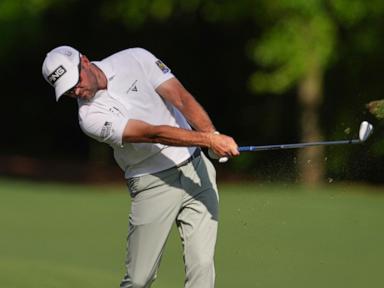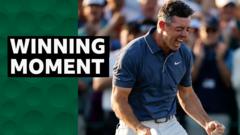
The hair is greyer, the body is as toned yet perhaps more defined, and the fist-pump clearly has more venom as he finally completes the extraordinary journey to career-Grand Slam immortality.
But the images of Rory McIlroy winning the 2014 US PGA Championship and Rory McIlroy prevailing at the 2025 Masters have more similarities than differences. A golfing genius doing what he does and for which his talent was born – celebrating on the game’s biggest stage.
However, any ‘spot the difference’ puzzle cannot begin to sum up a period that eventually led to one of the greatest comebacks on the fairways. A time when McIlroy never left the elite – indeed, during which he, for so long, lorded over his rivals – but unfathomably could not take what seemed the rational, if not straightforward, step of turning four majors into five.
Of course, in a sport that was already established enough in the 16th century to be played by Mary, Queen of Scots – she enjoyed a round at St Andrews the day after her husband, Lord Darnley, was murdered – 11 years can hardly be classed as an era or even an epoch. Yet for those of us who lived and reported our way through this timeframe, it sometimes felt like a never-ending story.
Except, it did end on Sunday, so it is worth zooming back to chart McIlroy’s mysterious major malfunctions, if only to underline the magnitude of what we witnessed when he took down Bryson DeChambeau and made that giant step to join Ben Hogan, Gene Sarazen, Gary Player, Jack Nicklaus and Tiger Woods in the pantheon of career Grand Slam winners.
An appropriate place to recount this tortuous tale might be before The Open at Royal Troon in 2016. It said plenty about his grandeur as a youngster – he had, alongside Nicklaus and Woods, become one of three players to win four majors by the age of 25 – that his record was so soon being questioned.

McIlroy finished 2014 having won back-to-back majors, with a World Golf Championship title in the middle, and marching tall as Paul McGinley’s predominant hero in Europe’s Ryder Cup victory. But then, just two years on, the golfing landscape had altered.
“It’s amazing, it wasn’t that long since we were sitting here thinking ‘Rory’s the new Tiger, he’s our new ...







